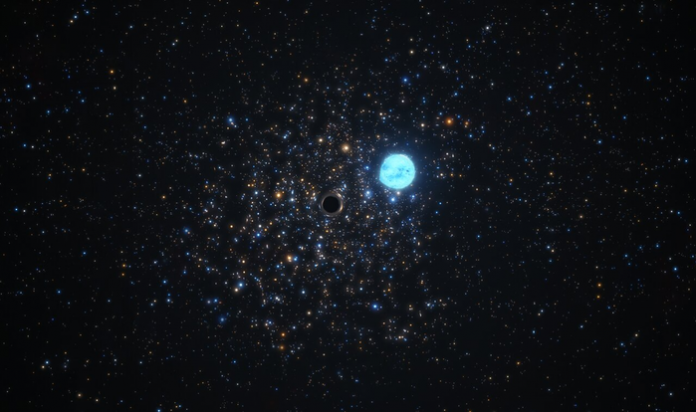The European Southern Observatory (ESO) have found a black hole outside the Milky Way, roughly 160,000 light-years away from Earth
ESO’s Very Large Telescope (VLT) has been scanning neighbour galaxies, looking for evidence of black holes. Now, they’ve found one for the first time using a new detection method.
The latest discovery is a black hole spotted in NGC 1850, which is a star cluster around 160,000 light-years away from Earth. It is located in the Large Magellanic Cloud, a neighbour galaxy.
How did scientists find the black hole?
The team used a dynamical method.
They observed “very crowded areas” like the innermost regions of stellar clsuters, analysing the light of every single star there. This led to the team being able to notice differences, such as a star moving in an interesting way. Stars like this signal proximity of black holes, which cause them to behave erratically.
Data from the University of Warsaw’s Optical Gravitational Lensing Experiment and from the NASA/ESA Hubble Space Telescope enabled them to measure the mass of the black hole and confirm their findings.
In the past, astronomers have been able to find small black holes in other galaxies via looking for the x-ray glow. This glow happens when the black hole consumes matter, or as gravitational waves created by the black hole collide with one another, or with neutron stars.
But, most black holes cannot be found this way.
“The vast majority can only be unveiled dynamically,” said Stefan Dreizler, a team member based at the University of Göttingen in Germany.
“When they form a system with a star, they will affect its motion in a subtle but detectable way, so we can find them with sophisticated instruments.”
Methods “similar to Sherlock Holmes”, says Sara Saracino
“Similar to Sherlock Holmes tracking down a criminal gang from their missteps, we are looking at every single star in this cluster with a magnifying glass in one hand trying to find some evidence for the presence of black holes but without seeing them directly,” said Sara Saracino from the Astrophysics Research Institute of Liverpool John Moores University in the UK, who led the research.
“The result shown here represents just one of the wanted criminals, but when you have found one, you are well on your way to discovering many others, in different clusters.”
The new ESO telescope in the Chilean Atacama Desert will be ready to use later this decade. Maybe it will find more secrets lying just outside of this galaxy.











